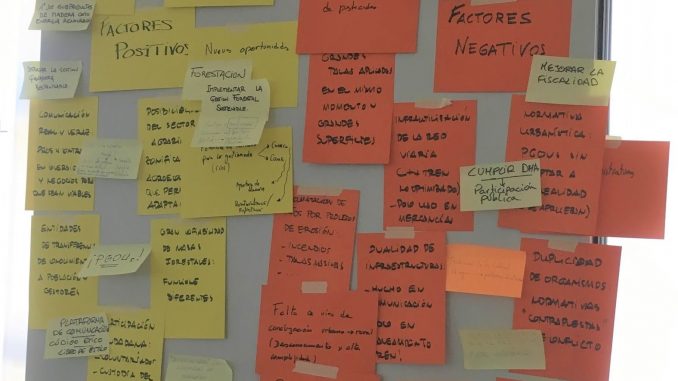
The basic foundation of the ALICE Project relies on the development of participatory learning approaches to involve local actors in the promotion of investments in Blue and Green Infrastructure Networks across the Atlantic region and beyond.
The main space for the involvement of stakeholders has been the different workshops in which a fluid exchange of knowledge and points of view has been achieved between the scientific teams and the representatives of the entities involved.
Specifically, in one of the four territories included in the project (Cantabria, Spain), the first workshop (March 2019) revealed an important knowledge gap in some of the key agents and, fundamentally, a terminology barrier to communication between the concept and how can we refer to it in the technical and scientific literature.
Given that the public participatory processes must generate a collaborative learning context, and that having at hand prior information is an essential requirement to be able developing discussions and advance in knowledge, the Spanish ALICE team decided to launch a dissemination tool oriented to ALICE objectives, bridging the gap and overcoming the encountered barriers.
Thus, in December 2019, the first digital newsletter was sent to more than 200 identified stakeholders. Since that moment, eight editions have been produced and submitted, tackling all relevant aspects to the ALICE project.
The structure of the newsletters has been always the same, consisting of seven sections “Nomenclature”, “Did you know that? ALICE up to date”, “Case Studies”, “Newspaper Library”, “Links of Interest” and “Planned Calendar”, with the aim of combining theoretical contents, practical cases, useful resources and updated information of the project.
The eight numbers published of the newsletter are presented below:
- Ecosystem services and nature-based solutions (NBS)
- Blue and green infrastructure Networks (BGINs)
- Prescribed burning
- Soil eosion
- Landscape in ecology
- Socioeconomic factors
- River connectivity
- Terrestrial connectivity
Regarding its dissemination, in addition to the more than 200 key agents identified in the project that received the newsletters in their e-mail, they have been distributed through professional networks such as LinkedIn, reaching each number a minimum of 1000 people. Some of the entities that participated as stakeholders have also published them through their social networks, mainly Facebook and Twitter.
In short, both due to its impact on the participants of the project and the wide distribution achieved, it can be considered that this tool has achieved the objectives of an efficient and locally-tailored communication strategy for allowing a more deep engagement between the science and capabilities of the project and social gaps of knowledge to find a solution for global needs.
